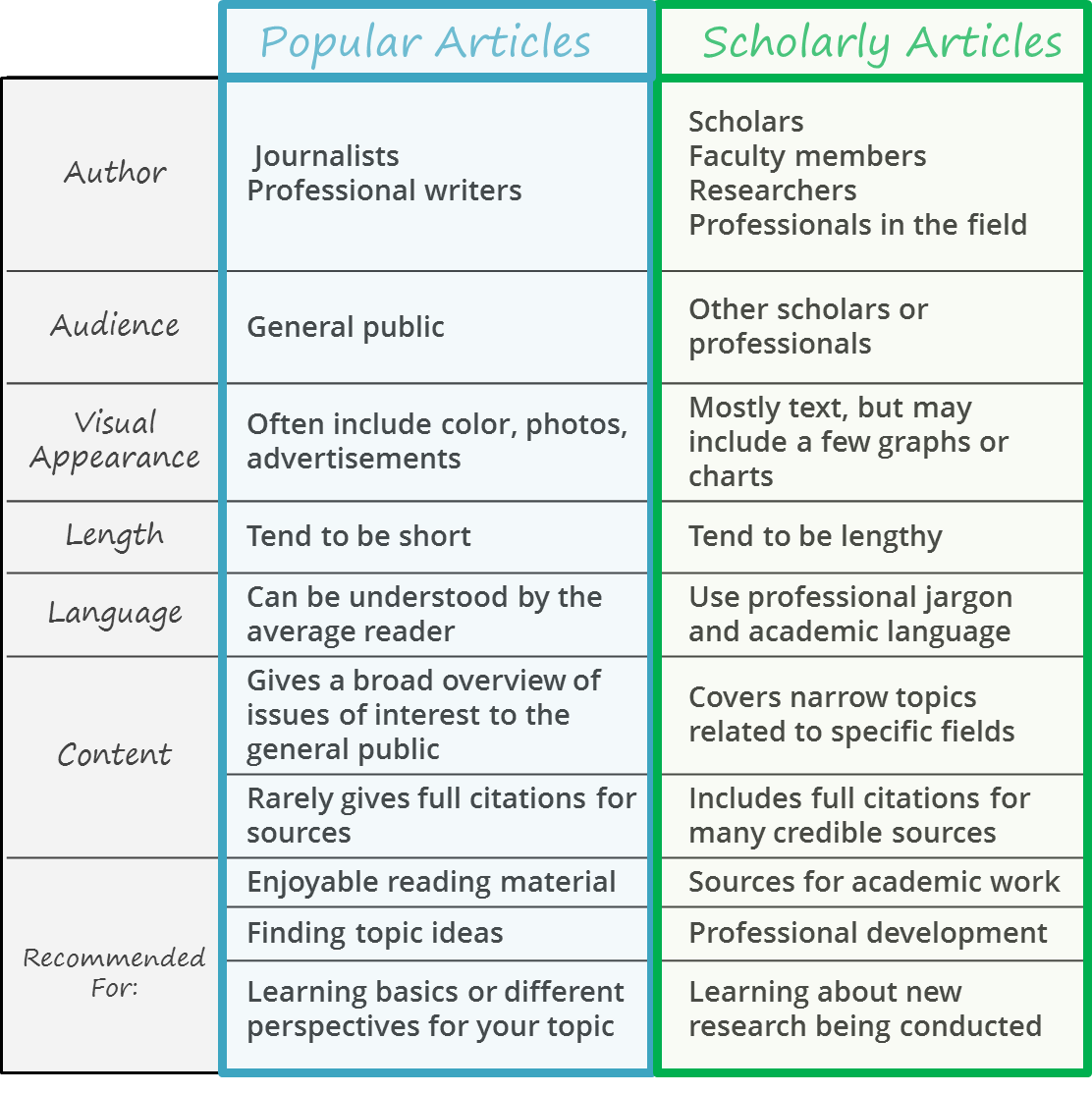
Things to remember about peer-reviewed (scholarly) articles:
1. Typically written by professors, scholars, professional researchers or experts in the field
2. Before publication, articles are scrutinized by other experts in the same field (that's why we call it "peer review")
3. Because of this rigorous review process, peer-review articles are considered to be among the most authoritative and reliable sources you can choose for your research paper or project
4. Peer reviewed articles usually have a narrow focus, and often report the results of a research study. You must think critically and carefully about how such an article applies to your topic. Often, they can provide excellent examples or case studies to support the arguments or explanations within your research paper.
5. Occasionally, academic/scholarly journals publish articles that have not been peer-reviewed (for example, an editorial opinion piece can be published in a scholarly journal, but the article itself is not "scholarly" because it hasn't been peer-reviewed).
Anatomy of a Scholarly Article
This interactive page illustrates the different sections that are often present within scholarly/academic articles.
While writing research papers, you may need to:
♦ List your sources in bibliographies or works cited, and
♦ Provide either footnotes, endnotes, or parenthetical citations
For more help with citations, check this guide out.
